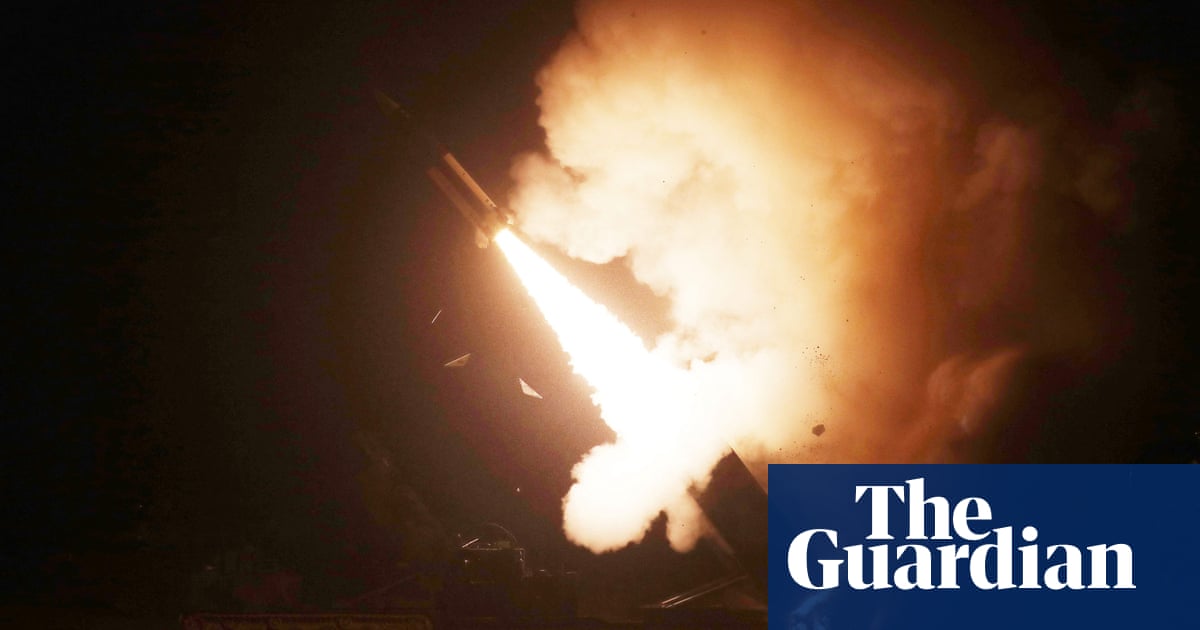It has taken an election defeat in the US and the arrival of 10,000 North Koreans in Ukraine for Joe Biden to finally relent. After two years of asking, Ukraine’s army has been given permission to use US long-range Atacms missiles to strike against targets inside Russia. The military and political consequences remain uncertain.
Russia has been able to bomb targets across all of Ukraine throughout the war. On Sunday it attacked key sites across the country’s power network, forcing Kyiv to implement national electricity rationing as a result of the damage caused. Some missiles were aimed as far west as Lviv and at sites near the border with Moldova, and an energy crisis is closer as a result.
Kyiv did not have a significant long-range missile programme before the full-scale Russian invasion and has been hamstrung by its western backers ever since. The US, UK and France may have donated long-range missiles but they have only allowed them to be used against targets inside Ukraine’s internationally recognised borders – meaning that key airfields, fuel depots, logistics sites and barracks in Russia had remained beyond the reach of Ukraine, except through drone attacks.
White House leaks to US media on Sunday night indicate that Biden, with two months of his presidency left to run, has given permission for Atacms missiles, which have a range of 190 miles (300km), to be used inside Russia. However, there is an apparent qualification: they must be used in relation to the battle in Kursk oblast. There, Russia, with the help of North Korea, has massed about 50,000 troops and is aiming to snuff out Ukraine’s three-month incursion.
“Reading the tea leaves, unfortunately this looks like more incrementalism,” said George Barros, a Ukraine expert at the US Institute for the Study of War. “It looks like the US wants the Atacms missiles to be used precisely against the North Koreans in Kursk, yet there is a large volume of meaningful Russian support infrastructure in locations such as Rostov, Belgorod and Vorenezh.”
Though there have been no Atacms missile attacks inside Russia recorded yet, some effects are expected to be immediate. Russian military planners are likely to move anything they believe is at risk out of range if they can do so fast enough.
That may be good value for the US also given that Atacms stockpiles are not plentiful and the missiles, at a cost of somewhere between $1m and$2m, are not cheap.
There may also be a value in directly threatening North Korea, whose entry into the war is hugely significant, Barros said. “So far the western response has been lacklustre, and there are reports that North Korea may be willing to send as many as 100,000 to fight against Ukraine.” With Russia and Ukraine’s combat forces considered very roughly matched at somewhere between 600,000 and 700,000, dissuading North Korea from sending more troops could be significant.
With a Donald Trump presidency looming, Ukraine also badly needs an opportunity to show what it can do, with western help, on the battlefield. “The Ukrainians need to convince the incoming US administration that they are still worth backing – in Trump’s transactional view, a ‘good investment’,” argued Matthew Savill, of the Royal United Services Institute thinktank.
In response, the west has to contend with Russian threats of escalation, though the reality of the Ukraine war is that, as Savill points out, Moscow “has already escalated”. Russia is already engaged in a heightened sabotage campaign across Europe, with assassination plots targeting western arms makers and arson plots, including sending incendiary devices via the DHL network to the UK.
Meanwhile in Ukraine, the attacks on power plants and substations primarily affect civilians, particularly when electricity is lost. “Russia’s strategy of escalating attacks, especially around holidays or weekends, is intended to break the spirit of Ukrainians and remind them of the hardships of war,” said Vladyslav Faraponov, the head of the board of Ukraine’s Institute of American Studies.
However, few experts believe that even allowing Ukraine to use Atacms more broadly inside Russia will have a decisive military effect. The US permission may well be followed by the UK, France and Italy agreeing to donate more of their Storm Shadow/Scalp missiles, which have a similar range, and allowing them to be used inside Russia. But again, stocks are limited, even if permission is given by the Europeans and the US, which provides a guidance system on which the missile relies.
Ukraine remains under serious pressure in the east, with Russian forces threatening to form a pocket that would encircle Kurakhove in the south. Though Russian casualties are running at record levels of about 1,500 a day, as the Kremlin tries to persuade Trump and his team that its victory is inevitable with constant frontline attacks, Ukraine is also short on personnel numbers and has never obtained decisive western support at any point during the war.
“Over time, Ukrainians have learned to live with initial refusals on the delivery or use of critical weapons, followed by hesitant ‘maybes’, and only after countless lives are lost, a reluctant ‘yes’. Unfortunately, this reactive approach is not what Ukraine needs to preserve its independence or endure potential negotiations,” Faraponov said.
A late decision to loosen restrictions on one missile type is not obviously the kind of decisive support that Ukraine hopes for either.

